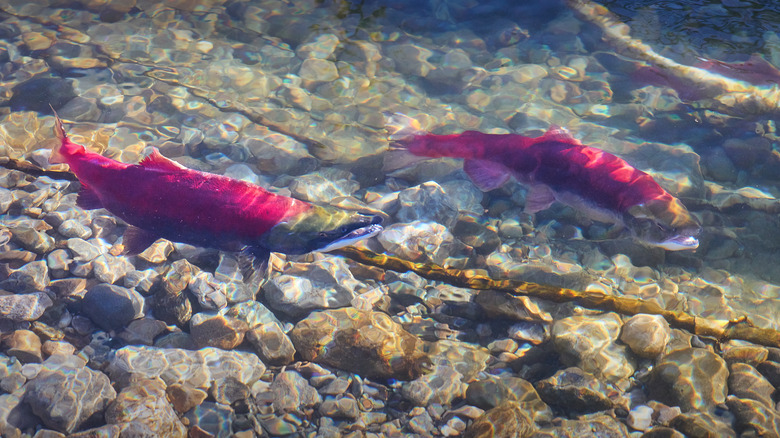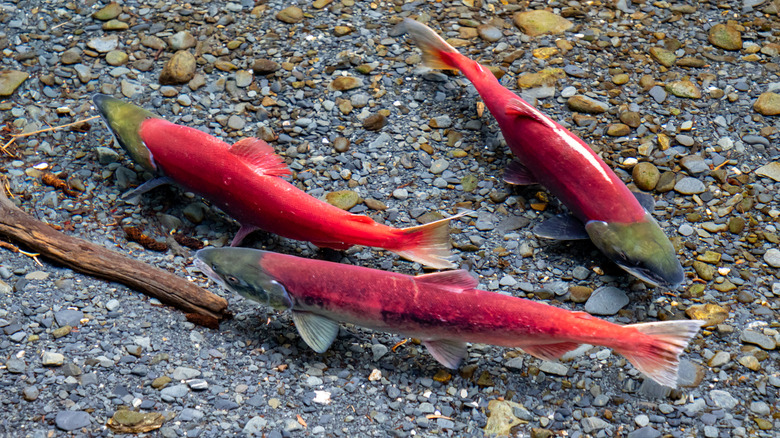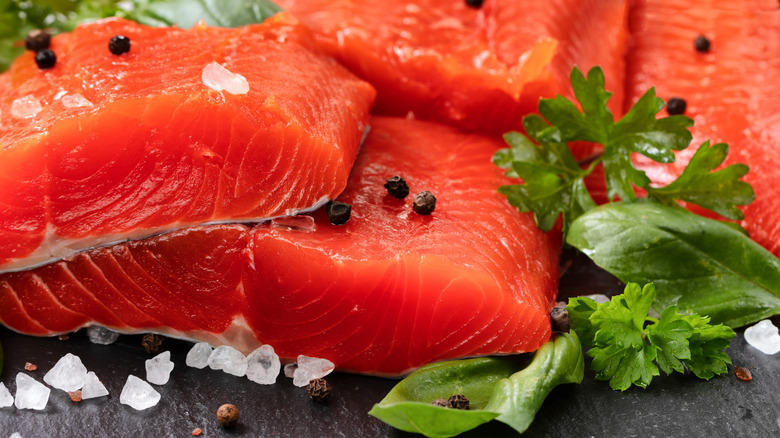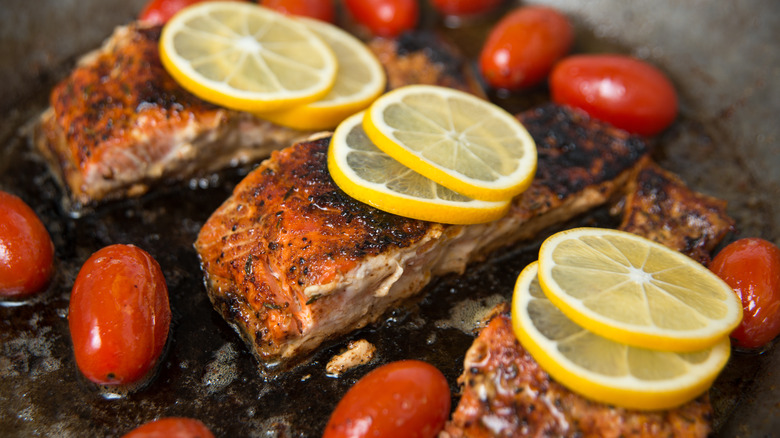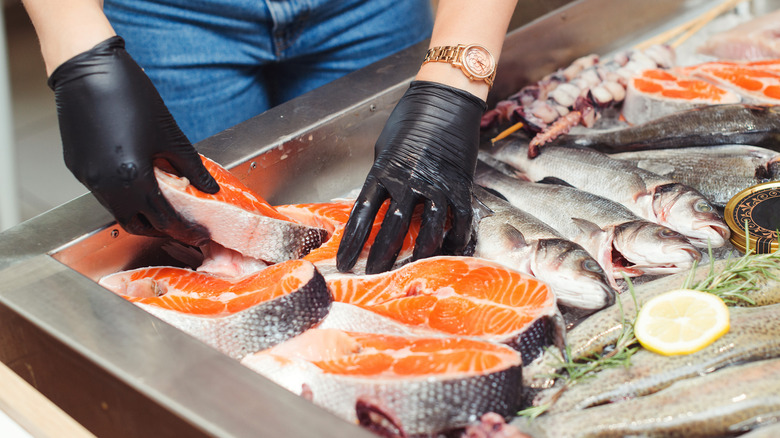What Is Sockeye Salmon And Is It Nutritious?
A well-balanced diet will most likely include some kind of fish and salmon is a flaky, delectable option that can be bought fresh or frozen. Fish is considered one of the healthiest foods one person can eat, according to Healthline. Eating it at least twice a week is incredibly beneficial.
There are actually seven different kinds of salmon. Five are in North America: Chinook, coho, chum, sockeye, and pink. While masu and amago salmon are in Asia. Sockeye salmon is a top-notch choice for its firetruck colored skin and high nutritional value.
Sockeye salmon are radiant red fish that swim through the clearest and coldest waters. Their flesh is colored red because of their diet that is really high in carotenoids, the same pigment that makes carrots orange, says the National Park Service. The meat of a sockeye salmon is just as rich in color as its flesh. Let's dive deeper into this delectable freshwater fish.
What is sockeye salmon?
Sockeye, also known as red or blueback salmon, is one of the smaller salmon species in the world. Granted, they can still range anywhere from five to 15 pounds and 24 to 33 inches in length, says National Geographic. Hard to think this fish is "small."
Interestingly enough, these colorful fish are only red when they are returning to the freshwater for spawning. When they do, their heads turn green and their bodies turn red (via FishWatch). When they aren't spawning, the flesh is usually silver, with a white belly, and bright green-blue top. There is quite an abundance of sockeye salmon available, especially since they have the third highest population of Pacific salmon.
Unlike usual salmon, sockeye prefer to stay in lakes, rivers, or streams for most of their lives and don't head downstream into the ocean until about two to three years after hatching, says The Spruce Eats. It is a good thing they deposit anywhere from 2,000 to 4,500 eggs because a couple of weeks later, they die off.
Is it nutritious?
Sockeye salmon is one of the most nutritious fish on the market. One of the best things about this fish is it has no added chemicals, artificial coloring, preservatives, pesticides, growth hormones, antibiotics, or GMOs, according to Eat Wild Salmon.
They also have the highest amounts of omega-3 fatty acids than any other fish, with about 2.7 grams in about half a cup. Omega-3 fatty acids are important for everyone's growth and development, especially the brain and eyes, says Healthline.
A five-ounce piece of sockeye will only have 214 calories, zero carbs, 10 grams of fat, and 30 grams of protein. There is an even longer list of minerals and vitamins that are packed into just one piece. There is a whopping 180% of vitamin B12, 60% of selenium, 55% of vitamin B3, 25% of both vitamins B1 and B2, and 35% of phosphorus, according to Nutrition Advance.
Overall, sockeye salmon is one of the healthiest things you could possibly eat, with very low levels of mercury and high levels of all the much needed daily vitamins and minerals.
How to cook sockeye
While salmon is pretty well known as a flaky fish, sockeye tends to have flesh that's on the firmer side, making it very easy to cook with. As most of you probably know, salmon can be cooked on the grill, baked, prepared on the stovetop, and even popped into the air fryer.
It has a natural crab-like taste due to its diet of plankton and shrimp, which only enhance its rich flavor. But because it's so rich, it is best to stick with the basics: oil, salt, pepper, and lemon.
If you are going to grill it, just top with the basics and grill flesh-side down and then flip it. For an open fire cooking style, be sure to cook on some type of cedar plank so it doesn't stick. It should only take about 10 minutes before it's ready to enjoy.
An easier way that requires basically no clean up is popping it in some foil and baking. Season up your salmon to your liking and then put it in a foil pouch with any sides you may want to cook along with it. By cooking it this way, the salmon and other foods will be steamed, which will make for a juicy filet rather than a dry one. Be sure to set your oven to at least 450 degrees.
Where can I buy sockeye?
The good thing about looking for sockeye salmon is that it comes fresh, canned, and frozen. Over half of what is sold in the U.S. is either fresh or frozen, rather than canned, according to Fish Watch. But there are still specific times of year when sockeye is at its peak selling point.
For the most part, sockeye is usually caught between June and July, which makes the summer the prime sockeye season (via The Spruce Eats). Ideally, the freshest salmon is eaten within one to two days after harvest, and unless you live in Alaska, Washington, or Oregon, where it is harvested the most, frozen is the way to go.
Don't get spooked by frozen fish! It is usually always flash-frozen right after being harvested and sealed within hours. If you want to try out sockeye salmon and they only have frozen, it is still a great choice, especially since Quality Seafood says it can last for several months in the freezer.
As you now know, summer months are sockeye months. You can find it at any local grocery store or fish market, but it doesn't hurt to call ahead if summer is at its end.
